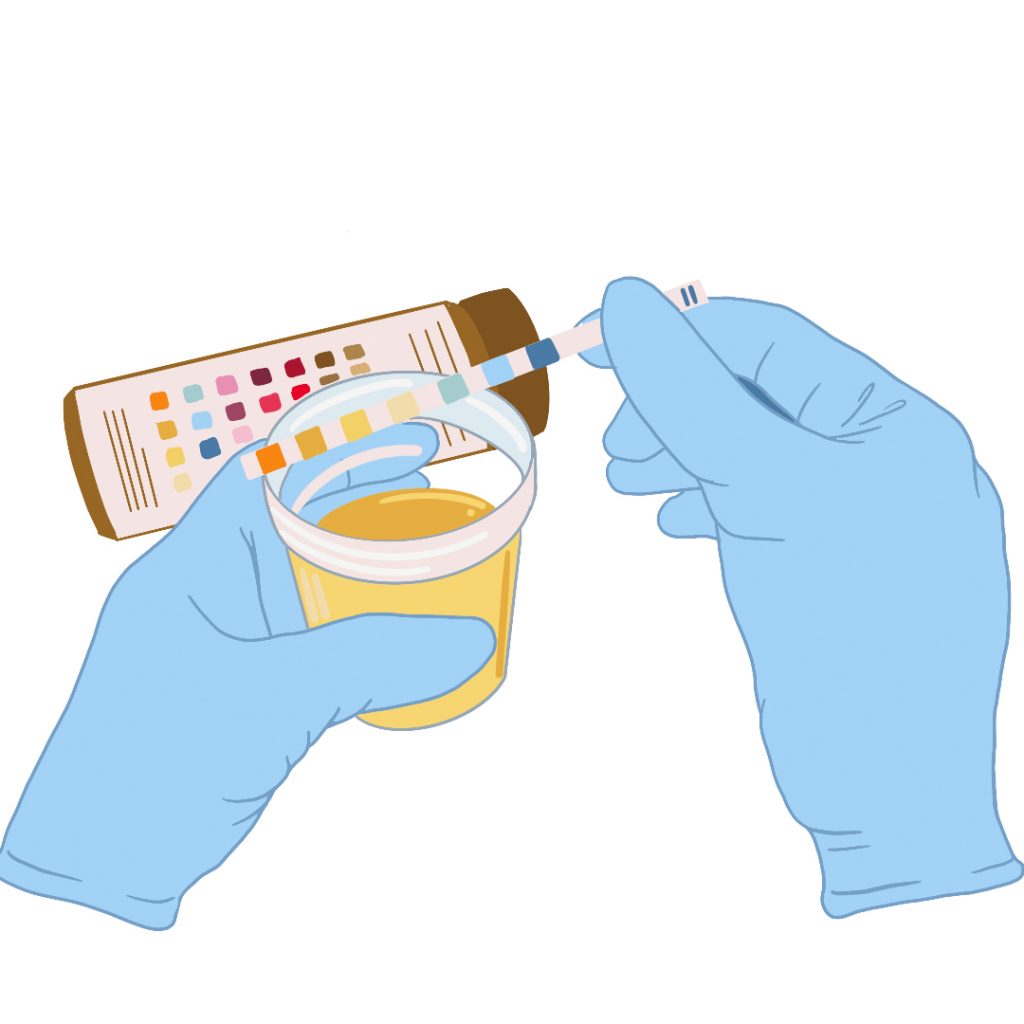Uroanalysis and Coprology
¿What is the coprological test and what is it for?
It is a clinical laboratory test in which a stool sample is analyzed in order to see both the general functioning of the intestine and its ability to absorb nutrients, if there is bleeding, inflammation, overgrowth of bacteria or yeast (fungi), and presence or infection with bacteria considered pathogenic and parasites.
This test can be complemented with tests such as stool culture, which aims to determine the presence of pathogenic bacteria in the stool to identify them and define their susceptibility to antimicrobials.
It can also be complemented with immunological tests that detect viral antigens of gastroenteritis-causing viruses such as rotavirus and adenovirus, among others, to make a rapid diagnosis of the infection and prevent its spread to other people. In addition, with molecular biology tests that allow simultaneous detection of bacteria, parasites and viruses in stool, such as the FilmArray gastrointestinal panel that we offer at Hematológico, whose result is obtained in approximately 2 hours.
¿What are the recommendations for taking a stool sample?
Ideally, a small portion of the sample should be taken. If it is liquid, between 1 mL and 2 mL, and if it is solid, approximately 2 g (equivalent to one bean). A new, sterile, screw-capped container should be used, which is usually available from the laboratory or a pharmacy. It is not recommended to collect the sample from the toilet but directly into the container or, in the case of infants, from the diaper without touching the cloth. The person should not be using creams, suppositories, laxatives, antidiarrheals, antibiotics or antiparasitics.
¿What is uroanalysis and what is it for?
This is a test that seeks to make a general analysis of urine, which indirectly assesses renal and bladder function by determining certain physicochemical characteristics such as macroscopic appearance, pH, density, bilirubin, glucose, proteins, urobilinogen, ketone bodies, nitrites, among others, as well as the search for erythrocytes, leukocytes, crystals and microorganisms. This study is complemented with the visualization of the urinary sediment under the microscope in which some of the aforementioned findings are confirmed.
In the case of suspected high (renal) or low (bladder) urinary tract infection, the urinalysis should be complemented with urine culture, which makes it possible to determine the infecting microorganism, identify and define its sensitivity to antibiotics, and guarantee the success of the treatment.
¿What are the recommendations for urine sampling?
Ideally, the first urine should be taken in the morning, after cleansing the genitals. A new, sterile, additive-free container should be used, which is usually delivered to the laboratory or can be obtained from a pharmacy. The first part of the urine should be discarded and the second portion should be collected. The patient should not be consuming antimicrobials or if he/she is using them it is important to inform the laboratory. Urine should be submitted to the laboratory within two hours of collection.




